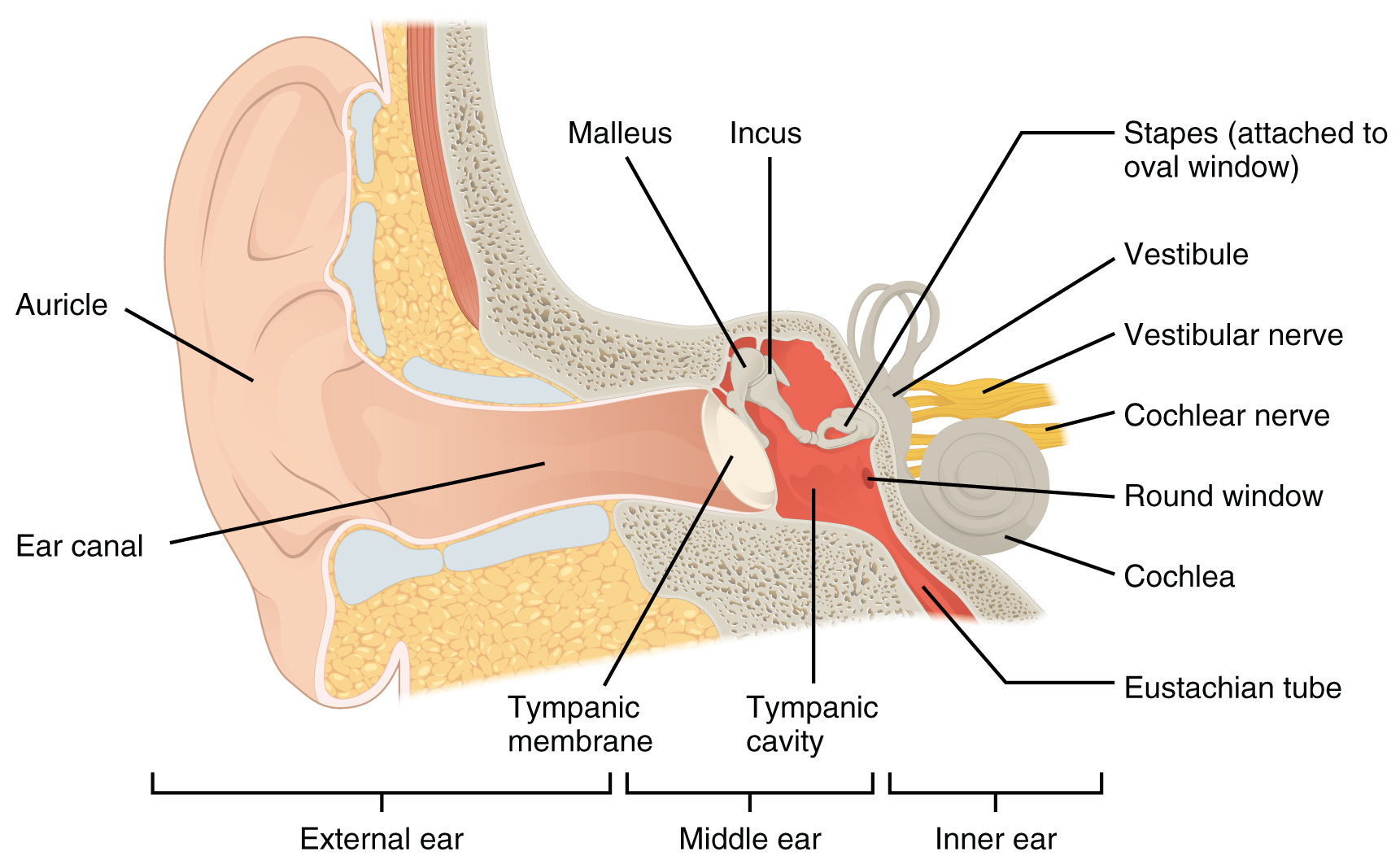| << Chapter < Page | Chapter >> Page > |
Hearing, or audition , is the transduction of sound waves into a neural signal that is made possible by the structures of the ear ( [link] ). The large, fleshy structure on the lateral aspect of the head is known as the auricle . Some sources will also refer to this structure as the pinna, though that term is more appropriate for a structure that can be moved, such as the external ear of a cat. The C-shaped curves of the auricle direct sound waves toward the auditory canal. The canal enters the skull through the external auditory meatus of the temporal bone. At the end of the auditory canal is the tympanic membrane , or ear drum, which vibrates after it is struck by sound waves. The auricle, ear canal, and tympanic membrane are often referred to as the external ear . The middle ear consists of a space spanned by three small bones called the ossicles . The three ossicles are the malleus , incus , and stapes , which are Latin names that roughly translate to hammer, anvil, and stirrup. The malleus is attached to the tympanic membrane and articulates with the incus. The incus, in turn, articulates with the stapes. The stapes is then attached to the inner ear , where the sound waves will be transduced into a neural signal. The middle ear is connected to the pharynx through the Eustachian tube, which helps equilibrate air pressure across the tympanic membrane. The tube is normally closed but will pop open when the muscles of the pharynx contract during swallowing or yawning.

The inner ear is often described as a bony labyrinth, as it is composed of a series of canals embedded within the temporal bone. It has two separate regions, the cochlea and the vestibule , which are responsible for hearing and balance, respectively. The neural signals from these two regions are relayed to the brain stem through separate fiber bundles. However, these two distinct bundles travel together from the inner ear to the brain stem as the vestibulocochlear nerve. Sound is transduced into neural signals within the cochlear region of the inner ear, which contains the sensory neurons of the spiral ganglia . These ganglia are located within the spiral-shaped cochlea of the inner ear. The cochlea is attached to the stapes through the oval window .
The oval window is located at the beginning of a fluid-filled tube within the cochlea called the scala vestibuli . The scala vestibuli extends from the oval window, travelling above the cochlear duct , which is the central cavity of the cochlea that contains the sound-transducing neurons. At the uppermost tip of the cochlea, the scala vestibuli curves over the top of the cochlear duct. The fluid-filled tube, now called the scala tympani , returns to the base of the cochlea, this time travelling under the cochlear duct. The scala tympani ends at the round window , which is covered by a membrane that contains the fluid within the scala. As vibrations of the ossicles travel through the oval window, the fluid of the scala vestibuli and scala tympani moves in a wave-like motion. The frequency of the fluid waves match the frequencies of the sound waves ( [link] ). The membrane covering the round window will bulge out or pucker in with the movement of the fluid within the scala tympani.

Notification Switch
Would you like to follow the 'Anatomy & Physiology' conversation and receive update notifications?